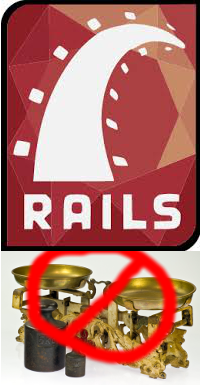Great Qualities for an Instructor
Recently Chad Fowler wrote a great job description for a software engineer. I replied that a person like that is currently un-hireable in Silicon Valley.
Another fellow asked me, how would I change the list for technical instructors rather than straight-up engineers?
And if they offered something...
The Good Project Manager
Recently, John Sonmez wrote about software development, and specifically claimed project managers don’t tend to do anything useful.
To be fair, sometimes he’s right. And you always have to watch out for “meta-work” – telling people what to do instead of doing things.
But I believe project managers...
The Tragedy of Yelp: Forced Into Extortion
If your startup does certain things, you wind up with the same business model as Yelp. It turns out you really, really don’t want the same business model as Yelp.

Let’s tell the story of the fictitious Emma Goldfarb founding a seed-stage startup called Review.ly (unrelated to the URL shortener.) Review.ly is going to be a site where people leave reviews of some kind of business. Emma isn’t quite sure about the details. She’s working on it.
Spoiler: she’s in an ugly situation because her startup wants to be like Yelp… And she really doesn’t want it to be.
Follow the Money
Where does Emma’s money come from? Advertising doesn’t pay much, unless you have people who are about to buy something online in a trackable way. Emma doesn’t. Most of her reviewers have already bought their thing. Users looking for reviews are (in her case) not going to buy through her, so she doesn’t get paid that way. Some sites can avoid that, but Emma can’t.
Selecting the Right Chef Cookbook: Attributes, Recipes, Data Bags
 There are many guides
to writing a Chef cookbook.
There are many guides
to writing a Chef cookbook.
But can you choose the right existing cookbook?
Let’s talk about how to choose, especially for Chef Solo, Chef Zero or MadScience.
What's Deployment versus Provisioning versus Orchestration?
 Hey, Ruby web developers! Having trouble asking deployment questions?
Not sure what Provisioning or Orchestration are? Getting bad results
Googling your questions, but not sure why?
Hey, Ruby web developers! Having trouble asking deployment questions?
Not sure what Provisioning or Orchestration are? Getting bad results
Googling your questions, but not sure why?
Let’s go over some deployment vocabulary from your point of view — that makes it a lot easier to Google and to read information about deploying your app to a server, and setting up that server in the first place.
As a nice side effect, you may have an easier time talking to your Ops guy at work.
First, let’s go over what the word “deployment” means:
Deployment
‘Deployment’ is the process of putting a new application, or new version of an application, onto a prepared application server.
If you are talking to a developer, it may also mean the process of preparing the server, perhaps by installing libraries or daemons. If you are talking to an operations professional, it DOES NOT. They use the word “provisioning” for that.
(Developers are going to keep using the word “deploy” for everything involved in getting our app and its dependencies installed. That’s cool. But don’t be surprised if you confuse your Ops guy.)
Tech Companies: Why You Can't Hire Awesome Engineers And How To Fix It
Hey, tech companies. Hey, engineers working at tech companies.
There’s a great post by Chad Fowler going around with a job description for an engineer we’d all love to work with.
He says he can’t find any of those engineers to hire. Spoiler: neither can your company. I’m going to tell you why not, and what it would take to fix it.
20 Small Reasons That Deploying a Rails App Is Hard
Are you deploying a Rails app? Here are lots of things you’ll probably have to watch for as you do… I’ve been writing an open-source gem and a (edited to add: now defunct) for-pay online class about this for months now. Let me share some things.
There are lots of big reasons that deploying a Rails app is hard. And lots of well-known, big tasks. But when you’re provisioning a server and deploying your application to it, lots of little things go wrong too.
I feel like the big things get a lot of respect already. Let’s look into some of the under-appreciated little things you have to get right in order to make a good deploy happen.
For starters, a lot of these small issues can require a lot of debugging. You know those two-line fixes that take three hours to find? Deployment is full of those. Here are some of mine to speed you on your way.
All Things Great and Small
You can’t compile recent Ruby on a VM with less than approximately 1GB of RAM. The amount varies a bit, of course.
When you try, you discover that GCC gives an internal compiler error as its “out of RAM” notice. Also, that the RVM cookbook tells you a completely wrong directory for the six logfiles to check for errors. At least, if you install RVM in user directories.
Why Do They Say Rails Doesn't Scale?
If you’re new to Ruby on Rails, you may be new to the old debates (pro and con) about how “Rails doesn’t scale.” You might wonder why people say that, or where it came from.

Let’s talk about that.
As far as “Rails Doesn’t Scale”, the main arguments go something like:
1) Ruby is slow, often up to 50x slower than C, so the server will eventually collapse.
This isn’t actually a scaling argument. But it’s true that Ruby is slow. Not 50x any more, closer to 5x (up to maybe 20x), but still, that’s not terribly speedy.
Rails doesn’t help Ruby here. A lot of the metaprogramming techniques it uses are among the slowest things Ruby does. I wrote a book about how Rails uses those techniques called Rebuilding Rails. They’re awesome, but they’re not speedy.
In practice, Ruby and Rails apps often “farm out” the slow stuff. The database is the traditional place to put the heavy lifting, but you’ll see Redis and Cassandra used in similar ways. Want Ruby to be fast? Call to something that isn’t Ruby, and is designed for speed :-)
Pure Ruby is quite slow, but just as scalable as any other language or library. It doesn’t get somehow slower as you add more.
2) Ruby/Rails leaks resources, so large or long-running projects don’t work
There was once more truth to this. Ruby had a few leaks and Rails exercised Ruby like nothing else. Also, ActiveRecord encourages large amounts of garbage per request, which was easy to mistake for leaks.
2014 Year In Review: One Programmer's Side Business
As Patrick McKenzie celebrates his 9th year in review and many other folks write theirs up, I believe I’ll write my first. It’s been a big year, and I have a lot to be thankful for.
Don’t know me? Makes sense. I wrote Rebuilding Rails, an ebook about understanding Rails by building a Ruby web framework from the ground up, as a result of Amy Hoy’s excellent 30x500 class. I’m writing a Ruby web app deployment class called (edited to add: now-defunct) Rails Deploy In An Hour. I’m employed full-time as the Analytics lead at OnLive, a cloud-gaming company. I have a wife and two kids, so selling products on the side is an adventure I don’t really have the time for — but I don’t let it stop me :-)
Let’s start with dollar amounts before explanations. That’s why I’d be reading if I were you.
Revenue in 2014
Amounts are net of processing fees and refunds. Also, it’s Dec. 23rd, so not quite done. But pretty darn close. Tell you what: if anybody buys a professional package of Rails Deploy In An Hour, I’ll update this to reflect it :-)
- Rebuilding Rails: $7,679.35 - 208 non-refunded sales, 6 refunds
- Rails Deploy In An Hour: $1,277.70. That’s three pilot students and one professional package buyer. Plus 1 sale-and-refund of developer package from a guy who thought I was farther along than I was.
- Misc - affiliate sale, guest episode: $600.00
Rails Deploy In An Hour is doing… okay. I reopened the class a few weeks ago and I haven’t done much for it since then. I’m waiting until more of the class is finished to seriously advertise for it, which means no sooner than January and more likely February.

Rebuilding Rails is basically flat year-over-year. That’s not amazing, but honestly better than I expected. My flurry of activity for the new class is breathing more life into it. I’m not doing much marketing for Rebuilding Rails itself right now. It has some nice posts that still bring in visitors, and an autoresponder email class. I’m playing with the idea of doing more of a second edition of Rebuilding Rails, but I just can’t justify it right now. Maybe in 2016?
(Do you just want more dollar amounts? My First $1000 in Product Revenue may be the right place for you.)
Products
Last Year’s Goals: I knew I wanted a new product. I didn’t think about much more.
This year I launched Rails Deploy In An Hour to its pilot class of three people, and I’ve made one continuing sale. It’s a deeper, more involved and more expensive product than Rebuilding Rails and it’s going to take awhile to really finish — not that such a product is ever 100% finished. I have three chapters done of seven, and two videos of at least ten, plus several miscellaneous guides well under way. Overall the class is probably 35%-40% done, though the software works fine now. This class? It’s too many pieces. I’m managing, but it’s a lot.
